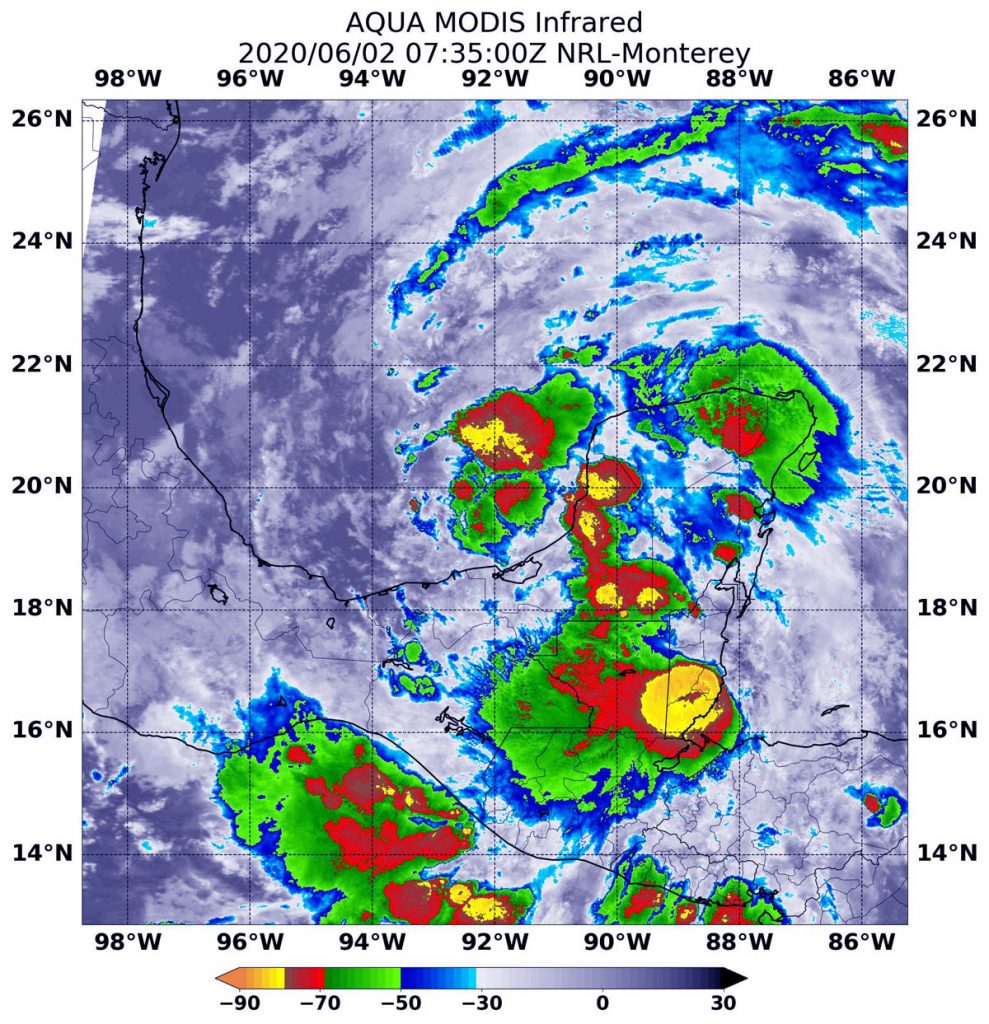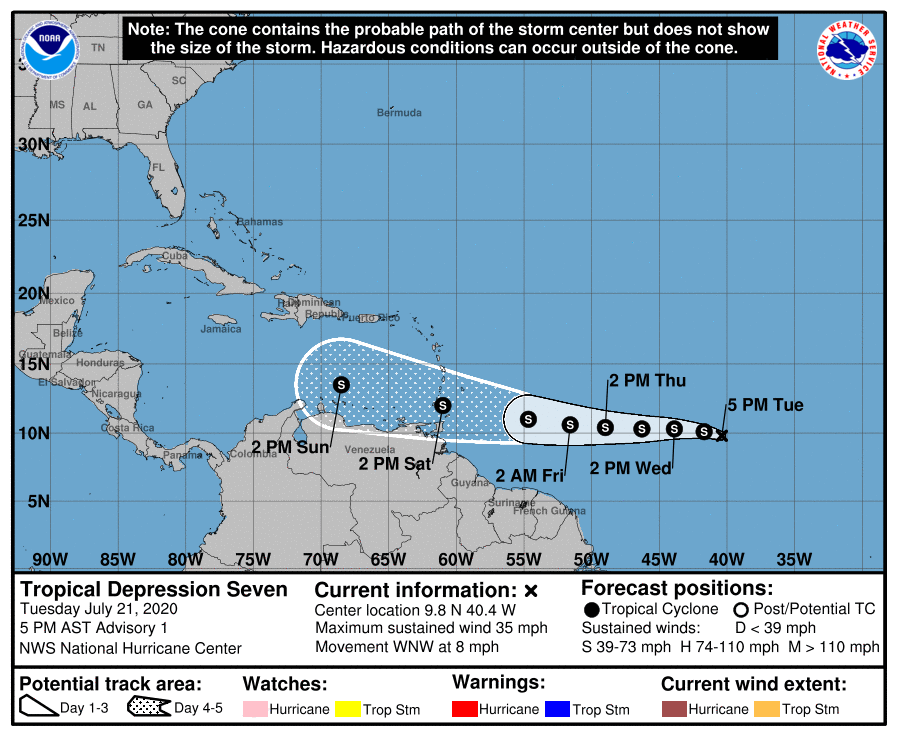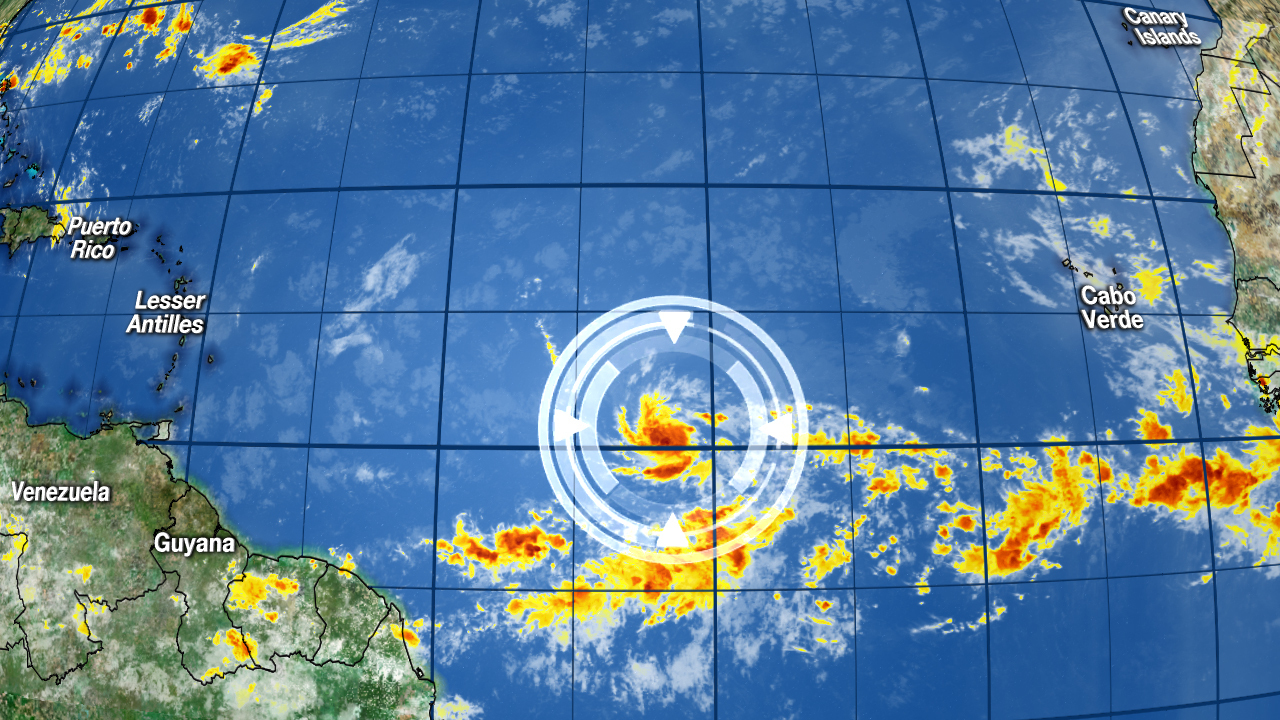Atlantic Ocean Tropical Depression

Hey friend!
Today, I want to share some exciting news with you. A tropical depression has just formed in the middle of the Atlantic Ocean. It's always fascinating to learn about these natural occurrences, so let's dive into the details.
So, what exactly is a tropical depression? Well, it's the first step in the formation of a tropical cyclone, like a hurricane or a tropical storm. It is characterized by a low-pressure area with organized thunderstorm activity, producing maximum sustained winds below 39 miles per hour.
Now, let's explore further.
Formation and Development
A tropical depression typically begins as a tropical wave, which is a disturbance in the atmospheric circulation. As the tropical wave moves over warm ocean waters, it can acquire more moisture and energy, eventually leading to the formation of a tropical depression.
Once a tropical depression forms, it starts to gather strength and may intensify into a tropical storm or even a hurricane, depending on various environmental factors such as sea surface temperature, wind shear, and atmospheric moisture content.
Current Situation
In the case of this specific tropical depression in the middle of the Atlantic Ocean, it is essential to rely on updated information from meteorological agencies to get accurate and real-time data about its location, intensity, and potential path. It's always a good idea to stay informed and prepared for any potential impact it might have on coastal areas.
Potential Impacts
Although tropical depressions are generally less severe than tropical storms or hurricanes, they can still bring heavy rain, gusty winds, and rough seas. These conditions may lead to localized flooding, disrupt marine activities, and pose hazards to small boats and ships.
To ensure safety, it is crucial to stay informed through official weather forecasts, follow any evacuation notices or warnings issued by local authorities, and take necessary precautions.
Benefits and Advantages
While tropical depressions can bring challenges and disruptions, they also play a significant role in maintaining the Earth's climate balance. They help redistribute heat from the equator to the poles, regulate ocean temperatures, and contribute to the overall circulation of heat and moisture in the atmosphere.
Additionally, tropical depressions provide significant data for meteorologists and researchers to better understand the complex interactions between the atmosphere and the ocean, leading to improved forecasting models and early warning systems.
In Conclusion
In conclusion, a tropical depression has formed in the middle of the Atlantic Ocean. While it's important to stay aware of its progression and potential impacts, it's also fascinating to witness these natural phenomena and appreciate their role in our planet's climate system.
Remember to follow official weather updates and take necessary precautions if you reside in or plan to travel to areas that may be affected by tropical depressions.
People Also Ask
Q: What are the key differences between a tropical depression and a tropical storm?
A: The key differences lie in their wind speeds. A tropical depression has maximum sustained winds below 39 miles per hour, while a tropical storm has maximum sustained winds between 39 and 73 miles per hour.
Q: How are tropical depressions named?
A: Tropical depressions are given names once they intensify into tropical storms. The naming follows specific lists developed by regional meteorological agencies, such as the National Hurricane Center in the United States.
Q: Can a tropical depression suddenly intensify into a hurricane?
A: While it is possible for a tropical depression to intensify rapidly into a hurricane under favorable conditions, it is not the most common scenario. Most tropical depressions follow a gradual intensification process, evolving into tropical storms first.
Q: How long does a tropical depression last?
A: The lifespan of a tropical depression can vary depending on a range of factors, including environmental conditions. On average, a tropical depression can last anywhere from a few days to a couple of weeks.
Q: Are all tropical depressions a cause for concern?
A: Not all tropical depressions pose an immediate threat to coastal areas. However, it is crucial to stay informed and follow official forecasts and advisories as they may develop into more significant weather systems.
If you are searching about Tropical depression forms in Atlantic Ocean you've came to the right page. We have 25 Pics about Tropical depression forms in Atlantic Ocean like Tropical Depression 9 forms in the Atlantic Ocean, Tropical Depression No. 2 forms far out in Atlantic Ocean and also Tropical Depression 7 forms in Atlantic Ocean - The Times of Houma/Thibodaux. Here you go:
Tropical Depression Forms In Atlantic Ocean
 www.usatoday.com
www.usatoday.com tropical depression forms atlantic
Tropical Depression Eight Develops In The Atlantic Ocean | Wtsp.com
 www.wtsp.com
www.wtsp.com wtsp atlantic
Tropical Depression Forms In Middle Of Atlantic Ocean
 www.wspa.com
www.wspa.com Tropical Storm Chantal Forms In Atlantic | WFLA
 www.wfla.com
www.wfla.com wfla forms chantal depressions
Tropical Depression 10 Forms In Central Atlantic Ocean, Forecast To Become Hurricane Imelda
 www.theindychannel.com
www.theindychannel.com imelda become approaches leeward
Tropical Depression 27 Forms, Continuing Record Hurricane Season
/cloudfront-us-east-1.images.arcpublishing.com/gray/AHINXKLHEFBIBOAHMOKNU3GBFY.png) www.ksla.com
www.ksla.com ksla hurricane continuing
NASA Analyzes The Newest Atlantic Ocean Subtropical Depression
 phys.org
phys.org subtropical analyzes
Tropical Depression 9 Forms In The Atlantic Ocean
 www.wtoc.com
www.wtoc.com tropical atlantic depression ocean wtoc forms sept friday source weather
Fay (Atlantic Ocean) | NASA
nasa depression atlantic developing subtropical oct aqua edt satellite captured data gov
Tropical Depression Develops In Atlantic Ocean - UPI.com
 www.upi.com
www.upi.com depression tropical atlantic ocean develops formed fourth named storm become bottom four could season don right which upi noaa hurricane
Tropical Depression Seven Forms In Central Atlantic Ocean | WBTW
 www.wbtw.com
www.wbtw.com tropical atlantic depression ocean forms seven central antilles lesser towards few days west over next
Tropical Depression Seven Forms In The Southern Atlantic Ocean
 www.kbtx.com
www.kbtx.com depression tropical seven
New Tropical Depression Forms In Central Atlantic; Forecasters Watching Two Other Tropical Waves
 www.al.com
www.al.com forecasters depressions
Tropical Depression 03L – Atlantic Ocean – Hurricane And Typhoon Updates
 blogs.nasa.gov
blogs.nasa.gov nasa depression atlantic ocean aqua tropical mexico 03l hurricanes soaking satellite
Tropical Depression Forms In Middle Of Atlantic Ocean - CNW Network
 www.caribbeannationalweekly.com
www.caribbeannationalweekly.com atlantic forms middle
Tropical Depression Four Forms In Atlantic Ocean | Tampa, FL Patch
 patch.com
patch.com atlantic depression tropical ocean four forms tampa fl patch disturbed upgraded overnight officially become weather area
Hurricane, Cyclone, Cyclone Rita, Hurricane Rita, Tropical Strom, Flood Damage, Fema.: Tropical
 hurricanenewsupdates.blogspot.com
hurricanenewsupdates.blogspot.com tropical depression goes hurricane nasa cyclone bahamas atlantic bonnie 2010 rita warnings sees florida form under edt captured visible 1515
Tropical Depression 1 Forms In Atlantic Ocean
 www.click2houston.com
www.click2houston.com depression
Tropical Depression Spins In Atlantic
depression tropical atlantic ocean central spins
Tropical Depression 29W Spins Up In Northwestern Pacific Ocean
 phys.org
phys.org depression tropical 29w pacific ocean nasa terra northwestern spins instrument aboard satellite captured sept modis visible
Tropical Depression 7 Forms In Atlantic Ocean - The Times Of Houma/Thibodaux
 www.houmatimes.com
www.houmatimes.com tropical atlantic depression forms ocean hurricane formed announced central national center over
Tropical Depression No. 2 Forms Far Out In Atlantic Ocean
 www.local10.com
www.local10.com Two Areas To Watch In The Atlantic For The Formation Of A Tropical Depression Or Storm | Weather
 www.wunderground.com
www.wunderground.com hurricane storms tropics
NASA - Hurricane Season 2010: Tropical Depression 9 (Atlantic Ocean)
 www.nasa.gov
www.nasa.gov nasa 2010 depression tropical september
Arthur (Atlantic Ocean) | NASA
 www.nasa.gov
www.nasa.gov nasa tropical depression florida coast off atlantic arthur satellite july instrument 01l visible captured aqua modis aboard storm
Depression tropical atlantic ocean central spins. Tropical depression forms in middle of atlantic ocean. Depression tropical atlantic ocean develops formed fourth named storm become bottom four could season don right which upi noaa hurricane
Comments
Post a Comment